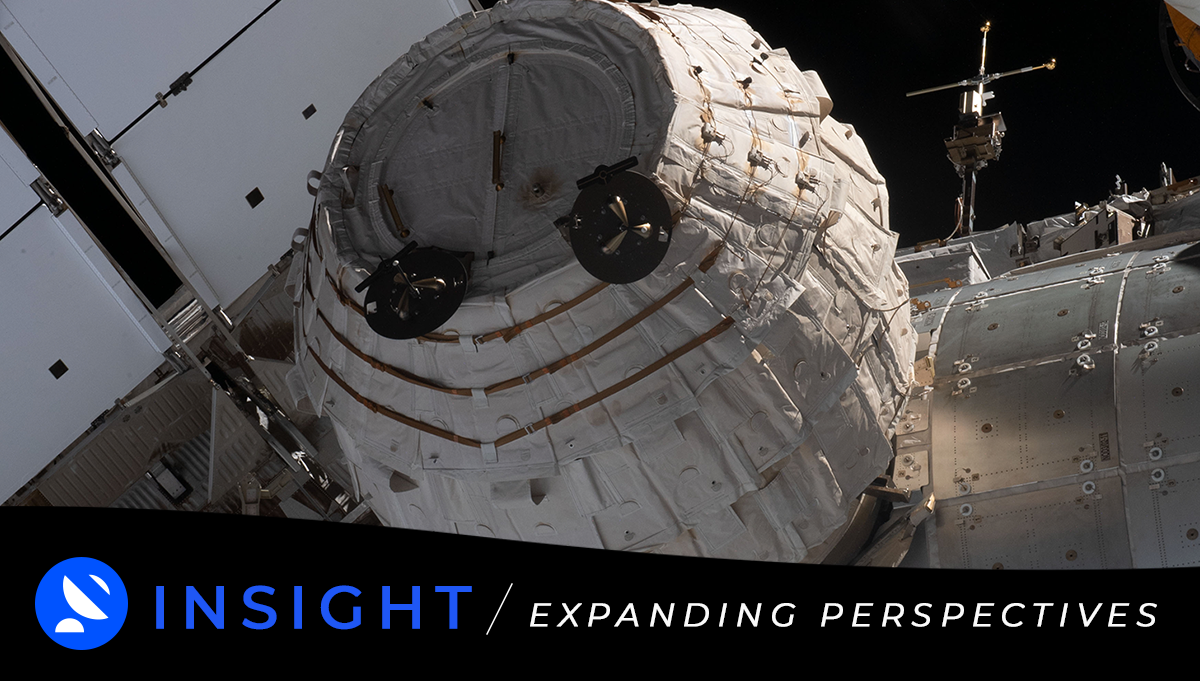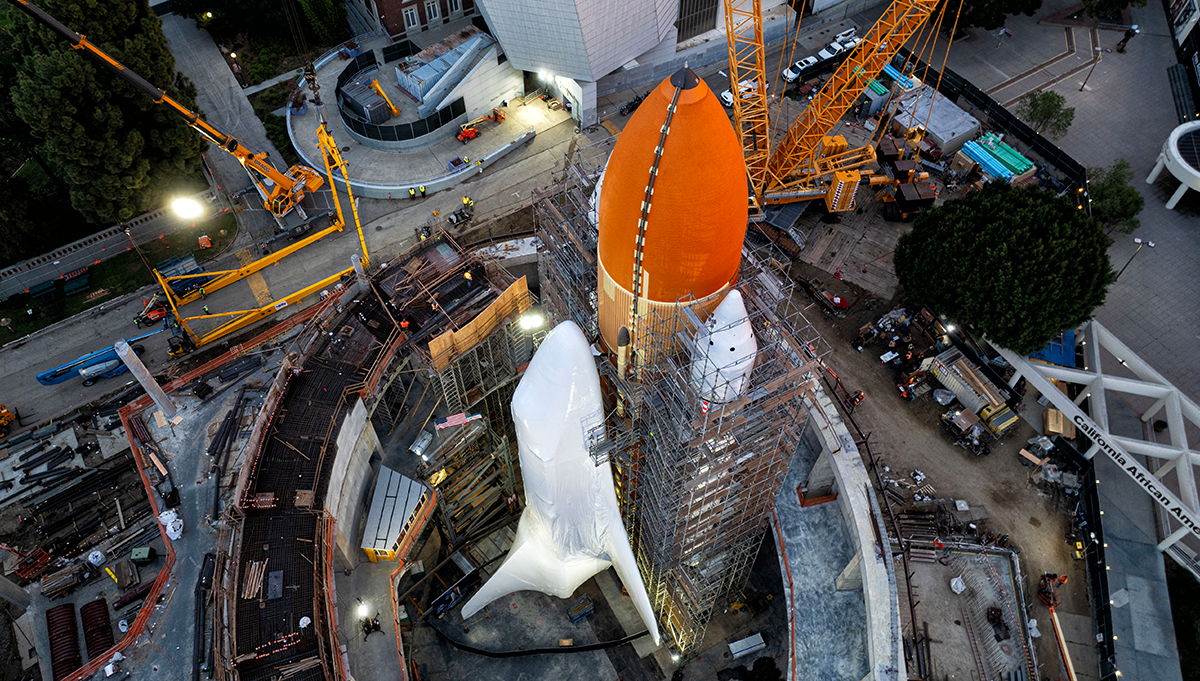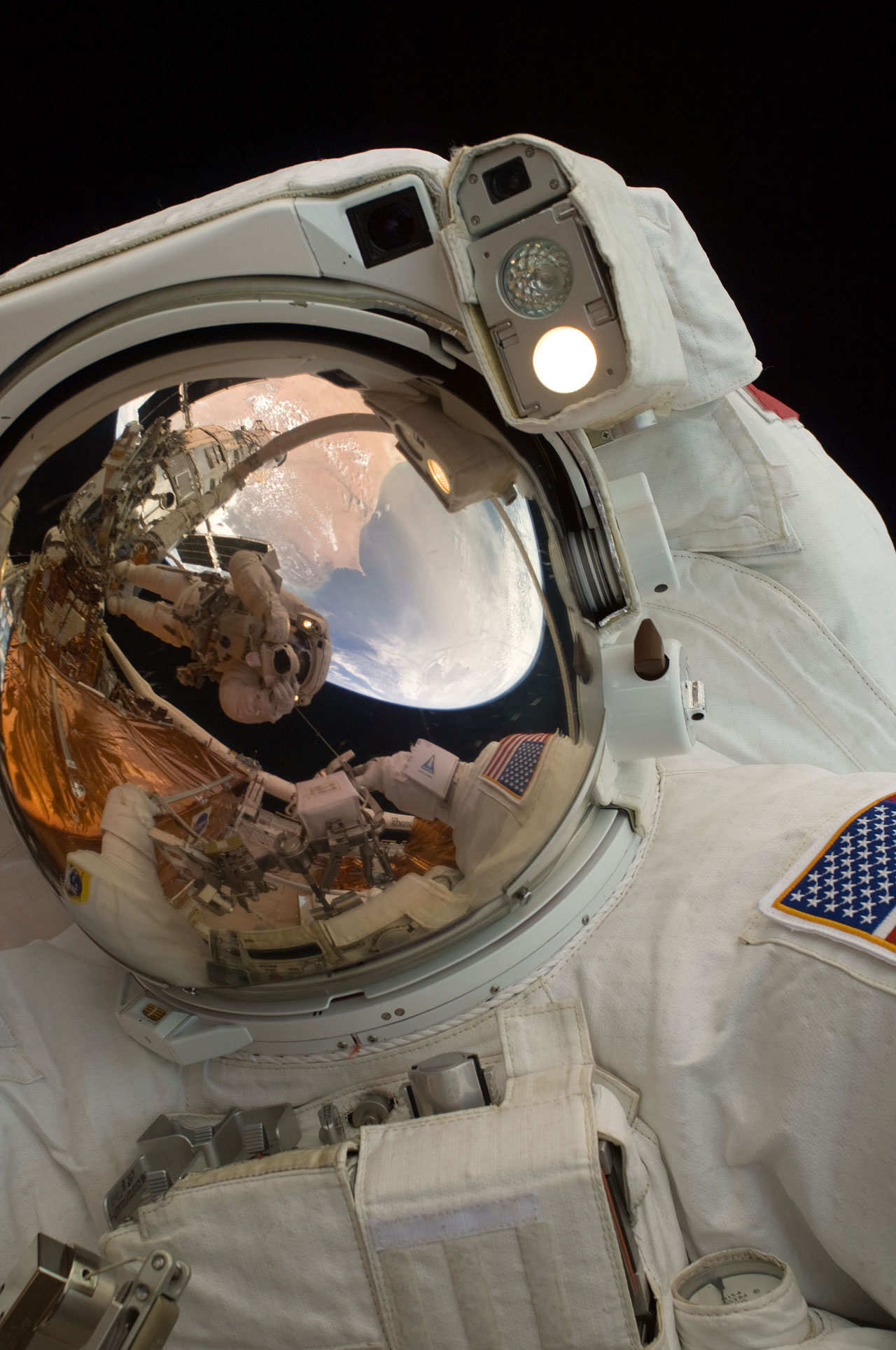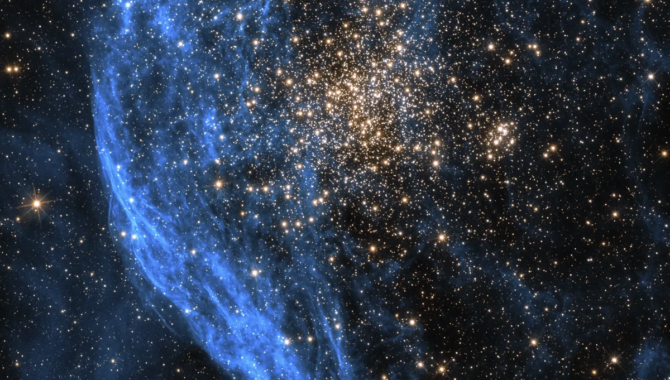
This Hubble image shows the star cluster NGC 1850, located about 160,000 light-years away. For this image, two filters were used with the camera to gather data, one at visible wavelengths the other at near-infrared wavelengths. Following chromatic order, the shorter wavelength visible light data is blue, while the longer near-infrared data is red. Credit: NASA, ESA and P. Goudfrooij
In an obscure paper, a prominent astrophysicist advocates for using rapidly advancing rocket technology to launch a massive telescope into space.
In 1946, as much of the world struggled to find a new normal in the aftermath of World War II, Lyman Spitzer, an astrophysicist with an interest in star formation, published an obscure appendix to a report for the Douglas Aircraft Company. In that paper, “Astronomical Advantages of an Extra-Terrestrial Observatory,” Spitzer laid out the case, decades in advance, for what would become one of humanity’s towering scientific achievements.
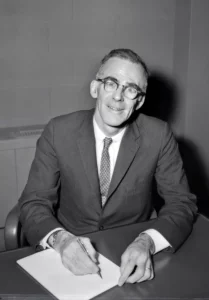
Lyman Spitzer was an American astrophysicist whose contribution to the field of astronomy revolutionized our understanding of the universe.
Photo Credit: Princeton Plasma Physics Laboratory
At a time when astronomers were eagerly looking to the Palomar Observatory in California, and the massive Hale Telescope nearing completion, Spitzer advocated for placing a telescope at least that large—5.1 meters in diameter—and perhaps three times larger, into orbit. An orbiting telescope would be beyond the distortion of Earth’s atmosphere. It would not only advance astronomy, Spitzer asserted, but could transform it by revealing “new phenomena not yet imagined, and perhaps … modify profoundly our basic concepts of space and time.”
The paper didn’t have an immediate impact on the scientific community. But writing it had convinced Spitzer that using rapidly developing rocket technology to launch a large telescope into space would be feasible during his lifetime and it would revolutionize astronomy. And so, when he was offered the opportunity in 1965 to chair the National Academy of Sciences’ Committee on the Large Space Telescope, he gladly accepted.
The committee published its report in 1969, noting that a Large Space Telescope would detect objects 100 times fainter than those observable on Earth and this would reveal important information about the content, structure, scale, and evolution of the Universe. Spitzer spent the next decade building support in the scientific community and advocating for funding for the project, as did Nancy Grace Roman. On October 1, 1977, the U.S. Congress approved funding for the project.
In 1983, work was well underway on the Hubble Space Telescope. It would be 43.5 ft long, with a maximum diameter of 14 ft, and weigh 24,500 pounds at launch. Able to make observations in the ultraviolet through infrared wavelengths, Hubble’s primary mirror was smaller than Spitzer had imagined, about 2.4 m in diameter. Powered by two 25 ft-long solar panels, the telescope would have the ability to lock onto distant targets with incredible precision.
That year, James B. Odom was appointed as manager of NASA’s Space Telescope Office, with responsibility to oversee a program that was behind schedule and overbudget. Odom was an aerospace engineer who had distinguished himself with work on the Space Shuttle’s external fuel tanks. It quickly became apparent to him that Hubble was much more complex than anyone expected.
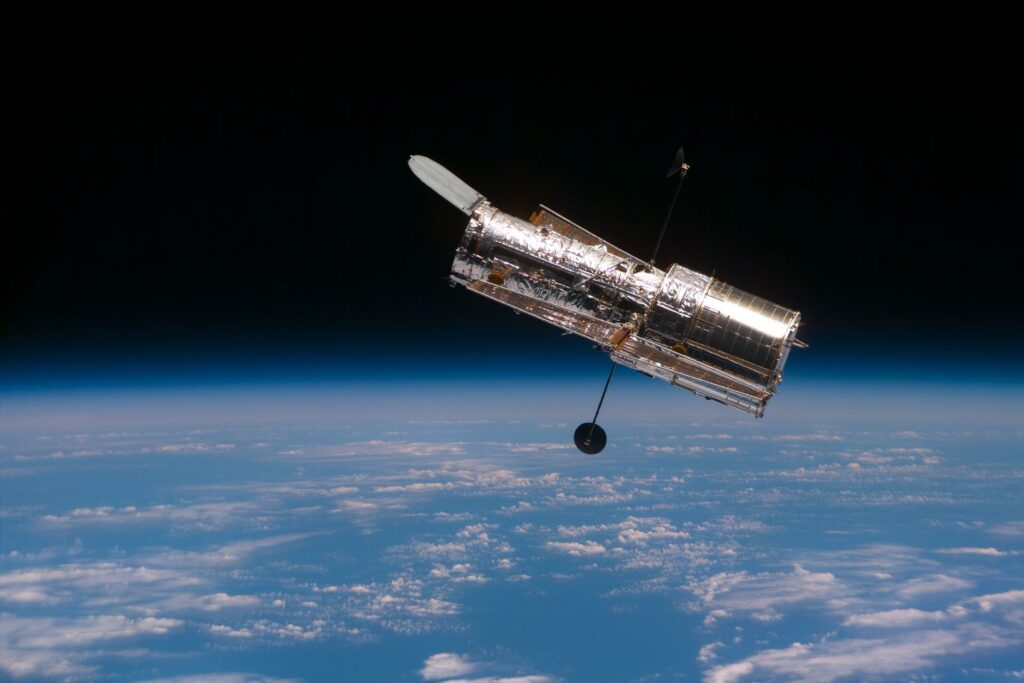
The Hubble Space Telescope (HST) begins its separation from the Space Shuttle Discovery following its release in 1997. This view was taken with an Electronic Still Camera (ESC). Photo Credit: NASA
“The requirements on virtually every subsystem, and I mean structures, GNC, power, the computer systems, not to speak of the instruments and the least of which would not be the optics, was pushing the state of the art every step of the way. Much more so than I think everybody really realized,” Odom recalled in an oral history. “The schedules were much tighter than were realistic for the amount of technologies that were being pushed by virtually every subsystem. When you put all of those things together, it just says you’re going to have a problem.”
Odom spent his first month reviewing the program and assessing the strengths and weaknesses. Then he built a new program from that point forward until launch, which required building a new budget to meet the program’s objectives. And that meant breaking especially difficult news to stakeholders.
“You can imagine how welcomed we were when we went to headquarters and to the congressional committees and said, ‘Well, gee, we’ve already spent $700 million and we’re going to need [$400 million] more,’ when the [$700 million] was already more than what the original estimates were. You can imagine how much I looked forward to that message, but we got the money, and we got a schedule. I had absolutely excellent support from headquarters.”
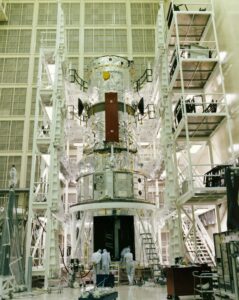
This photograph taken in 1986 shows the Hubble Space Telescope (HST) flight article assembly with multilayer insulation, high gain anterna, and solar arrays in a clean room of the Lockheed Missile and Space Company. Photo Credit: NASA
With the program baselined, and more funding and staffing available, Odom set out to address some technical challenges that had been deferred. Odom met with the science working groups for Hubble, listening attentively, and then leading efforts to resolve hardware problems.
“There is one thing, in my judgement, that I have not seen in any of the history books, but if you look at the … physical interfaces between all of the subsystems on Hubble, they’re probably the most complex set of interfaces that mankind has ever done. I’m talking about relative to hardware at that point in time. It was by far the most demanding, one of the most complex systems that mankind has built,” Odom said. “There’s hardly anything that you can touch on that thing that is not extremely demanding.”
As Hubble moved into assembly and testing, Odom noted that the interface control documents that were built by the team early in the program were exemplary.
“We found virtually no square pegs and round holes when we got ready to connect up all this hardware, software, and data systems, which says that that part of the program that was done back when the people were criticized for doing so poorly, there were a lot of things that were done right,” Odom said. “We benefited from those after I took over the program. I think a lot of those people, in my judgement, took a lot more heat and a lot more punishment and a lot more criticism than was warranted. If you’ll look at what they got, what they achieved with the resources they had, they did a darn good job.”
“I mean it’s pretty easy to come in at $400 million to finish the program, but if they had not done an awful lot of good engineering, good analysis, and good planning, then we would have never finished the program,” Odom added.
NASA launched the Hubble Space Telescope aboard the Space Shuttle Discovery on April 24, 1990, 34 years ago this month. The crew of STS-31 deployed it on April 25. Lyman Spitzer was 75 years old when the transformative telescope he had envisioned as a much younger man was placed into orbit. In the decades since, the Hubble Space Telescope has captured the public imagination with dazzling images and touched off a wave of discoveries that changed astronomy forever.
To learn more about the Hubble Space Telescope, click here.


